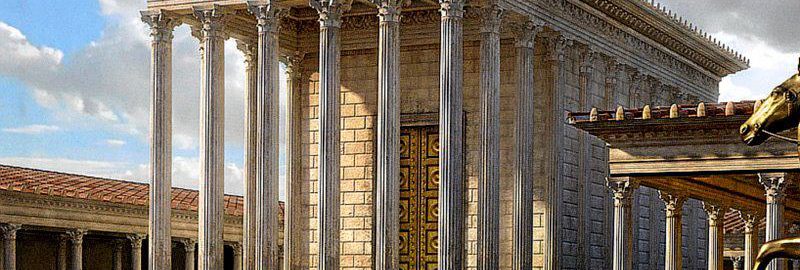Chapters
In general history, there is understanding that Rome was founded in 753 BCE by the legendary king Romulus, who according to the Romans was the son of Mars – the god of war and the priestess of the goddess Vesta, who was to descend from the family of Aeneas himself. The real date of founding Rome was not known fully even for Romans. Furthermore, archaeologists and researchers conducted their own attempts to determine when the “Eternal City” was founded.
Ancient sources
The ancient Romans were unsure about the year Rome was founded. However, they were sure of the day and month – it was April 21. This day was extremely loudly celebrated in the streets of Rome. On this day, the Romans worshipped a deity looking after shepherds and their flocks – Pales; the holiday was called Parilia. The holiday was important because the early Roman community was based on agriculture and farming. When the holiday took on a national character, bonfires were lit and dances were organized. Moreover, they were feasting in the open air.
Coming to the topic of dating Rome. Dionysius of Halicarnassus (1st century BCE) in his work “Roman history” (Rhomaike archaiology) left us several dates suggested by ancient figures.
- Dionysius himself estimated that Rome was founded in the first year of the Seventh Olympics, i.e. 752-751 BCE
- Timajos – Greek historian from Sicily, writing in the 4th-3rd century BCE – he stated that Rome was founded in 38 before the first Olympics, i.e. around 814-813 BCE
- The first Roman historian (IV-III century BCE), Quintus Fabius Piktor claimed that Rome was founded in the first year of the eighth Olympics, i.e. 748-747 BCE
- Lucius Cyncjusz Alimentus (3rd century BCE) suggested the fourth year of the twelfth Olympics, i.e. 729-728 BCE
- According to Cato the Elder (234-149 BCE), Rome was founded 432 years after the end of the Trojan War. Dionysius calculated that it was the first year of the seventh Olympics, i.e. 752-751 BCE
The best known and the recognized date was presented by Marcus Terentius Varro (116-27 BCE) – according to him, Rome was founded in 753 BCE. Similar conclusions were presented by Titus Pomponius Atticus (109-32 BCE), the famous addressee of Cicero’s correspondence.
Because of the uncertainty as to the exact date of the founding of Rome, the Romans preferred to specify a specific year based on the names of the two consuls in the office at that time, rather than suggesting ab urbe condita (A.U.C. – “from the founding of the City“).
Scientific approach
The oldest traces of settlement that have been found so far on the Tiber River date from 1000 to 800 BCE. In the 40s and 50s. Of the twentieth century, it was established that on the Palatine (and perhaps Velia) from 1000 BCE. there was a settlement whose inhabitants buried the dead at the foot of the hill (the so-called Sepulcretum), close to the later Roman Forum. Another settlement was in the Quirinal and the Capitoline Hill, where settlement presence on the second hill could already have occurred even in the fourteenth century.
In 1949, archaeologist Einar Gjerstad managed to confirm that the valley between the hills had numerous huts, which was to prove that the place was inhabited before the creation of the public square. The change in the use of the valley was to take place between the mid-July and the beginning of the VI century BCE.
An Italian archaeologist, Andrea Carandini, investigating the area in the 20th century, found there were traces of a wall along the Palatine slope formed around the middle of the 8th century BCE. These studies do not indicate the exact date the city was founded over the Tiber, but confirm the existence of an urban cluster in this place already at such an early period. The place was exceptionally well-chosen. She was most comfortable here, looking from the mouth of the river, crossing the Tiber. So she had to lead this way leading to the coastal salinas, a place of obtaining salt, necessary for the Sabean mountain tribes dealing in cattle and sheep breeding. This road also led to the cities of southern Etruria. The Bend of the Tiber just off the island gave a convenient port to which Phoenician and Greek ships with various types of goods could arrive. In other words, it was a dream place for a shopping centre.
The Palatine settlement after about a hundred years merged with the second village, inhabited by the Sabines, focused on the slopes of the Quirinal and Capitol. Separating the two communities, the swamp was buried and thus one of the most famous tourist destinations in Rome was created – Forum Romanum.







